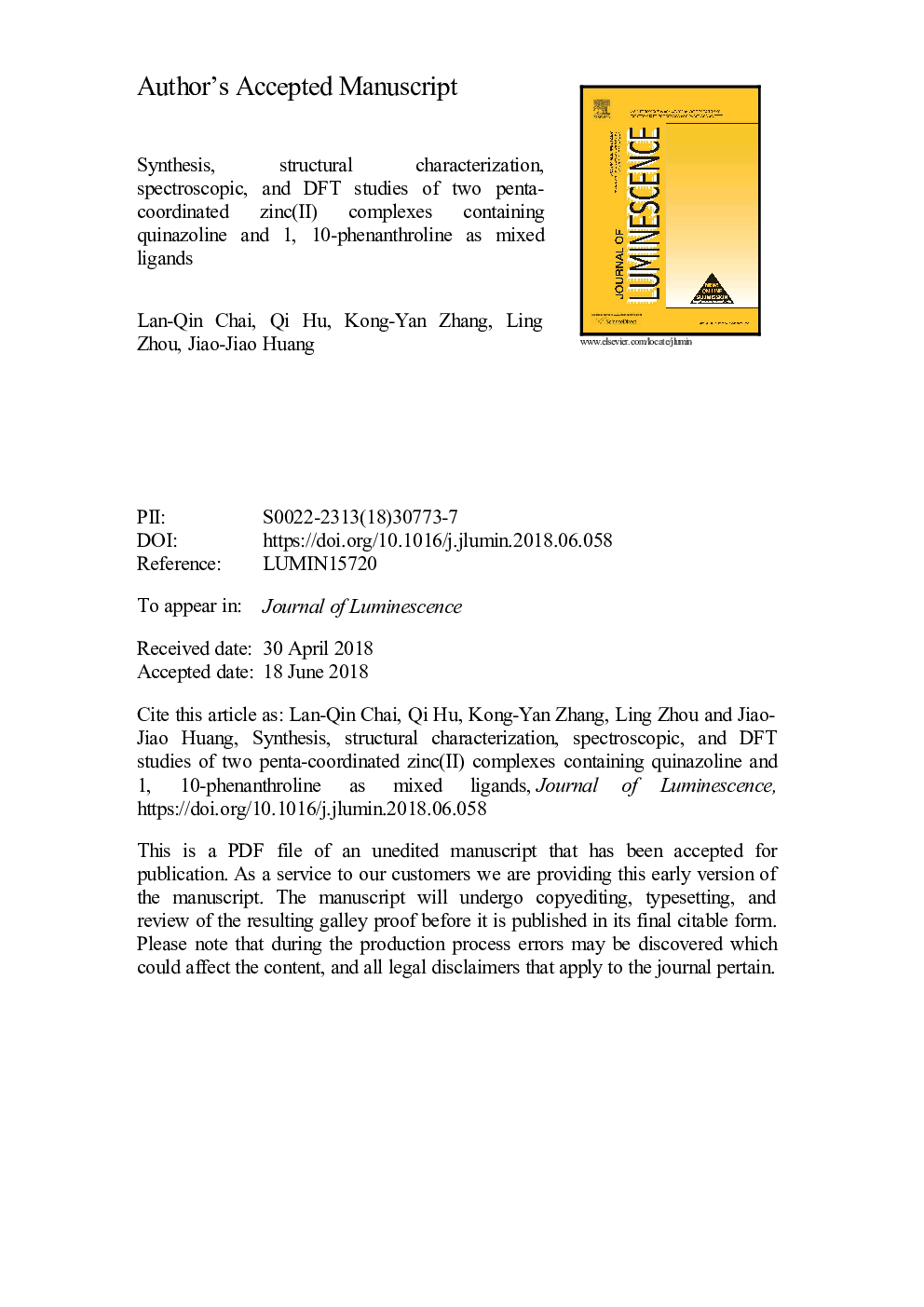| Article ID | Journal | Published Year | Pages | File Type |
|---|---|---|---|---|
| 7839693 | Journal of Luminescence | 2018 | 41 Pages |
Abstract
Two 2-D and 3-D supramolecular zinc(II) complexes, [Zn(L1)(phen)(NO3)2] (1) and [Zn(L3)(phen)(NO3)2] (2), have been synthesized via complexation of salt nitrate hexahydrate with quinazoline-type ligands and 1,10-phenanthroline, where HL1 =â¯4-methyl-2-(4-nitrophenyl)-1,2-dihydroquinazoline 3-oxide, HL3 =â¯2-(4-cyanophenyl)-4-methyl-1,2-dihydroquinazoline 3-oxide (H is the deprotonatable hydrogen). The plausible reaction mechanism for the formation of 4-methyl-2-(4-nitrophenyl)quinazoline 3-oxide (HL2) was proposed. These compounds were synthesized and characterized by IR, UV-Vis, and fluorescence spectroscopy, as well as by elemental analysis, respectively. The spectroscopic data of both complexes were compared with the ligands HL1 and HL3. The single crystal X-ray structures of HL2 and both complexes were determined. X-ray single crystal analyses reveal that both complexes have penta-coordinated geometry and form an infinite 2-D and 3-D supramolecular frameworks through classical H-bonding and ÏÂ·Â·Â·Ï stacking interactions. The normalized fluorescent spectra show clearly that complexes 1 and 2 have favourable fluorescent emissions in different solvents. In addition, the calculated HOMO and LUMO energies show the character of complexes 1 and 2. The electronic transitions and spectral features of complexes 1 and 2 were discussed by TD-DFT calculations.358
Keywords
Related Topics
Physical Sciences and Engineering
Chemistry
Physical and Theoretical Chemistry
Authors
Lan-Qin Chai, Qi Hu, Kong-Yan Zhang, Ling Zhou, Jiao-Jiao Huang,
